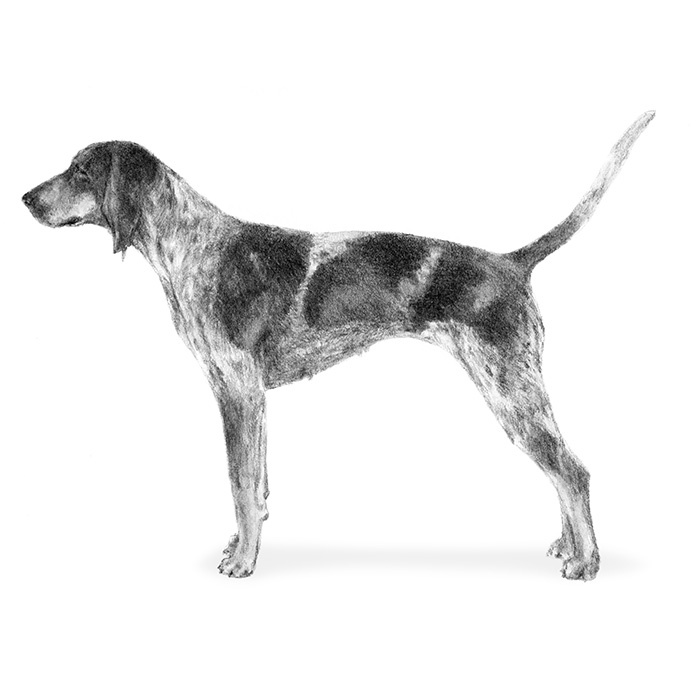
Bluetick Coonhounds are speedy and compact nocturnal hunters named for the mottled (or “ticked”) black-and-blue pattern of the glossy coat. A small female might stand 21 inches at the shoulder and weigh 45 pounds; a large male can top out at 27 inches and 80 pounds. Blueticks are well-muscled but sleek and racy, never chunky or clumsy. The baying, bawling, and chopping bark of Bluetick Coonhounds in hot pursuit might sound cacophonous to some, but to coon hunters it’s the music of the night.
- The modern Bluetick’s color indicates that it descended from the Grand Bleu de Gascogne (French Staghound) as well as the English Foxhound.
- Proud of their larger, cold-nosed and resolute, if slower hounds, they named their breed and maintained their own hunting style.
- Many French hounds were brought to America and contributed to the coonhound breeds.
- For a short time, puppies with blue ticking were classified as Blueticks and those with red ticking were still called English.
- One owned by George Washington was recorded as giving birth to 15 puppies, and Washington likened their musical voices to the “bells of Moscow.”
- But that practice soon ceased as each Coonhound maintained its own group of staunch supporters.
- The Grand Bleu was too slow on the trail to please the American hunter, but when bred to American hounds, it increased their coldtrailing ability and their endurance.
- An intelligent, cold-nosed hunter that trees hard and long, the Bluetick has the ability and endurance to stay on the most intricate track.
- Although Blueticks were originally classified as English Coonhounds, Bluetick breeders broke away from the English breeders in 1945 because they didn’t want to follow the trend toward producing a hot-nosed, faster hunter.
- He is a free tonguer on the trail with a medium bawl or bugle voice when striking and trailing. This changes to a steady chop when running and a steady course chop at tree.
The above text and image © 2017 American Kennel Club.
